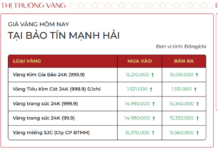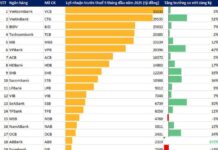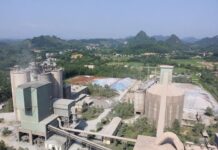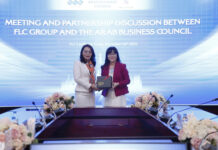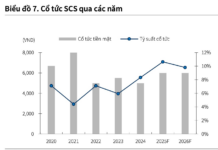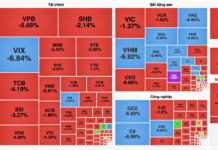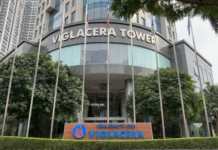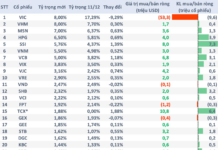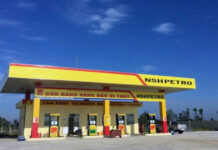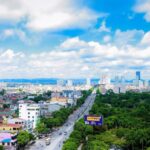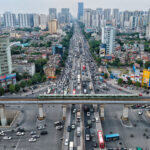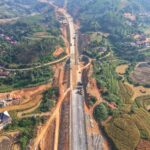
India and Vietnam flags
Indian Conglomerates Are Expanding Their Presence in Vietnam
During the state visit to India by Prime Minister Pham Minh Chinh, Indian conglomerates are eyeing investments in Vietnam, planning to pour billions of US dollars into various sectors. These projects mark a significant step in the growing economic and strategic ties between the two nations.
Notably, Gautam Adani, one of India’s most influential billionaires, announced a $2 billion investment to build the Lien Chieu Port in Da Nang. The port will not only enhance Vietnam’s maritime infrastructure but also serve as a crucial node in regional and global supply chains. This investment aligns with Vietnam’s strategic goal of becoming a logistics hub in Southeast Asia.
Beyond port development, the Adani Group has expressed interest in participating in the second phase of the Long Thanh International Airport and expanding the Chu Lai Airport. Additionally, the group aims to invest in energy projects in Binh Thuan, specifically the Vinh Tan 3 Thermal Power Project, with a total expected investment of $2.8 billion.
It’s not just the Adani Group; other Indian conglomerates, particularly in the pharmaceutical sector, are eager to invest in Vietnam. One notable proposal comes from BDR Pharmaceuticals, a leading Indian pharmaceutical company. They aim to establish a production facility for cancer treatment drugs in Vietnam.
SMS Pharmaceuticals, one of India’s largest pharmaceutical manufacturers, has proposed developing a high-tech Pharmaceutical Industrial Park in the Nghi Son Economic Zone (Thanh Hoa) with an investment of approximately $200 million in phase 1. They plan to attract a total investment of $4-5 billion over the next decade, targeting the US and European markets.
A Bright Future Ahead
According to Dr. Majo George, a senior lecturer in Supply Chain and Logistics Management at RMIT University Vietnam, the growing collaboration between India and Vietnam is not a new phenomenon but a continuation of a long historical relationship.
The establishment of a comprehensive strategic partnership in 2016 further solidified this relationship, fostering cooperation in various fields, including education, science and technology, and defense. Dr. George mentions that Indian investment and technology will not only bolster Vietnam’s infrastructure but also pave the way for knowledge transfer, skills development, and innovation.
“As Vietnam seeks to diversify its economy and reduce reliance on traditional economic sectors, the expertise and experience of Indian businesses can play a pivotal role in this transformation,” Dr. George assesses.
Based on this, Mr. George believes Vietnamese businesses have a tremendous opportunity to capitalize on current and future investments from India. To effectively engage in the value chains and ecosystems established by Indian enterprises, he suggests that local businesses proactively form joint ventures and strategic alliances with Indian companies in various fields, including infrastructure, pharmaceuticals, research and development (R&D), and technology.
“This collaboration can facilitate technology transfer, improve operational efficiency, and provide access to new market opportunities,” advises Dr. George.
Additionally, local businesses can leverage their strengths in manufacturing and services to complement Indian investments. By doing so, they can enhance the overall value chain by providing high-quality, cost-effective products and services, especially in areas where Vietnam has a competitive advantage.
Given India’s vast market potential, Dr. George suggests that Vietnamese companies explore export opportunities, particularly in sectors where they have a competitive edge. Establishing distribution networks and partnerships in India can expand their market reach.
Moreover, businesses should focus on upskilling and retraining their workforce to meet the demands of high-tech industries. This can be achieved by investing in training programs and workshops with Indian experts to build local capabilities, ensuring that Vietnamese businesses can meet quality standards and innovate effectively, especially in infrastructure development and pharmaceuticals.
“Through such proactive efforts, Vietnamese businesses can join new value chains, boost infrastructure development, and strengthen economic ties with India,” emphasizes the expert. “Overall, the entry of Indian conglomerates into the Vietnamese market marks a significant milestone in bilateral relations.”
The promising relationship between the two countries was initiated and boosted by aviation activities. In March 2019, when two Vietjet airplanes brought the guests of the Indian billionaire couple Rushang Shah and Kaabia Grewal’s wedding to Phu Quoc, it introduced the 1.4 billion people country to a beautiful and innovative Vietnam. A new sky was opened for businesses from both countries, leading to a rapidly growing market.
Since December 2019, the first direct route connecting Hanoi and Ho Chi Minh City with New Delhi, India’s capital, has been officially launched by Vietjet, making Vietnam one of the favorite destinations for Indian people. Up to now, the airline has transported nearly 1.3 million passengers between the two countries, operating 7 routes with 56 flights per week, connecting Hanoi and Ho Chi Minh City with India’s leading metropolises such as New Delhi, Mumbai, Ahmedabad, Kochi, Tiruchirappalli, and famous destinations like Bodh Gaya, Varanasi… promoting economic and tourism exchanges between the two countries and promising a bright future ahead.
Recently, Vietjet welcomed its 200-millionth passenger and announced a new route connecting Ahmedabad, India, with the livable city of Da Nang.






